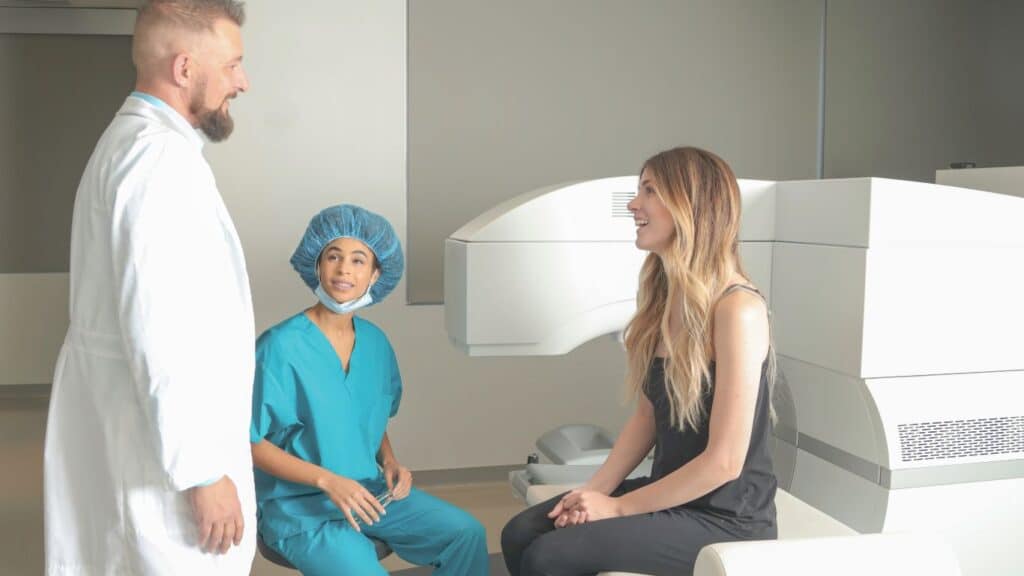Imagine waking up every morning to crystal-clear vision, able to see the world with a sharp clarity that you'd long forgotten. No more fumbling for your glasses or struggling with contact lenses. Thanks to corneal refractive surgery or LASIK surgery, many have enjoyed this gift—freedom from corrective eyewear and the joy of clear sight in their daily lives. However, as time goes on, the lens of the eye can become cloudy due to cataracts, which diminishes all the benefits of LASIK. This is where cataract surgery comes into play, offering a second chance at pristine vision. Enter the intraocular lens (IOL), your customized vision solution designed to restore and even enhance your eyesight after cataracts. Choosing the best cataract lens after LASIK surgery is crucial to maintaining the quality of life you've come to enjoy.
In this blog post, we will explore the intricacies of selecting the best cataract lens after LASIK surgery, ensuring you continue to experience the joy of clear vision every day.
If you need the experience of board-certified eye doctors, our team at Texas Vision & Laser Center is ready to guide you through the process and help you choose the perfect treatment plan for your unique needs. Contact us today and let us help you see the world in all its beauty once again.
Book Your Consultation With TVLC Today & See The World Clearly!
Choosing the right intraocular lens (IOL) can feel overwhelming, especially after experiencing the freedom refractive surgery provides. Don't worry; we're here to guide you through the various options, ensuring you find the best fit for your lifestyle and vision needs.
Opting for monofocal IOLs means prioritizing clear vision at one specific distance, typically far away. These lenses are straightforward and effective, providing excellent clarity for activities like driving or watching TV. However, you might still need glasses for close-up tasks like reading or computer work.
By choosing monofocal IOLs set for distance vision, you can enjoy activities such as driving and sightseeing without the need for distance glasses.
For those with astigmatism, toric IOLs offer a solution that corrects this irregular curvature, providing sharper focus. These lenses are designed to treat astigmatism directly, leading to significantly improved visual acuity and overall satisfaction.
Also, even if you've had LASIK in the past, some residual astigmatism might remain. Toric IOLs can address this issue, offering a tailored vision correction that further enhances your sight quality post-cataract surgery.
For more versatile vision correction, multifocal IOLs provide a range of clear vision distances, potentially reducing the need for glasses altogether. Multifocal IOLs are designed to offer clear sight across various distances. This multifocality is perfect for those who wish to reduce their dependence on glasses, as you can see well both up close and at a distance. Therefore, many post-LASIK patients report satisfaction with their ability to perform diverse tasks without switching between multiple pairs of glasses.
However, you must note that multifocal IOLs can sometimes result in side effects such as halos or glare, particularly in low-light conditions. Discussing these potential drawbacks with your cataract surgeons can help you make an informed decision.
Extended depth-of-focus (EDOF) IOLs extend the range of good vision, providing a seamless transition between various distances. This technology offers continuous vision from intermediate to far, making it easier to switch focus without the abrupt changes common with traditional multifocal lenses.
One of the key benefits of EDOF lenses is improved depth perception, which can be particularly advantageous for activities like sports or driving. These lenses provide a more natural visual experience, bridging the gap between near and far vision effectively.
While extended depth-of-focus lenses excel in providing a broader range of vision, they might not be as effective for very close-up tasks, like detailed reading. If reading is a significant part of your daily routine, it’s important to assess whether EDOF lenses meet your specific needs.
Achieving the best results with toric lenses hinges on precise alignment. Correct placement and rotation of the lens are crucial, as even slight misalignments can affect vision quality. Your surgeon’s expertise plays a vital role in this process.
Our team at TVLC is here to guide you through the process, ensuring your IOL is aligned accurately and improving your chances of a successful outcome. With our years of experience and state-of-the-art technology, we will help you achieve clear vision once again.
Book Your Consultation With TVLC Today & See The World Clearly!
Choosing the right IOL after LASIK can feel like a daunting task, but you're not alone in this journey. We're here to walk you through every step, ensuring that you can continue to live your life with the best vision possible.
Having undergone LASIK means your cornea has been reshaped to improve your vision, but this also changes how we approach selecting the best IOL for you. Your corneal anatomy is unique, and understanding it helps us choose an IOL that complements and enhances your post-LASIK vision.
Not to mention, your corneal shape can continue to change for some time after recovering from LASIK eye surgery. The time elapsed since your surgery can influence IOL selection, as we aim to choose a lens that adapts to these potential changes.
Accurate pre-LASIK assessment and measurements of your eye are essential. These metrics guide us in selecting an IOL that matches your specific visual needs. A 2022 study highlights the importance of these measurements in achieving optimal IOL outcomes.
Your day-to-day activities and visual preferences also play a crucial role. Whether you enjoy reading, driving, or sports, we’ll consider your lifestyle to ensure you choose the best cataract lens after LASIK surgery that best supports your needs.
Your current dependency on glasses post-LASIK is also significant. If you’ve embraced a glasses-free lifestyle, we’ll focus on IOL options that maintain or enhance this freedom.
Your vision needs are unique, and a thorough eye examination helps us understand the specific characteristics of your eyes post-LASIK. This detailed assessment enables us to gather essential data that guides us in selecting the most suitable IOL for your eyes.
Using state-of-the-art corneal imaging technologies, we analyze how LASIK has altered your cornea. This precise imaging gives us a clear picture of your eye's current structure, allowing for accurate IOL power calculations and better visual outcomes.
Your vision preferences and goals are paramount. Engaging in an open dialogue about your expectations allows us to align the IOL selection with your lifestyle and visual needs, ensuring we choose a lens that enhances your day-to-day experiences.
At TVLC, we understand that choosing an IOL after LASIK can be overwhelming, but our team is here to guide you through the process and help you achieve clear vision once again. Book a consultation with us today to explore your options and find the best IOL for your unique needs.
Book Your Consultation With TVLC Today & See The World Clearly!
The mere idea of surgery can be intimidating, but TVLC is here to reassure you that the procedure is safe and straightforward. Here's what you need to know.
Today’s cataract surgery techniques are designed to be as minimally invasive as possible. Using advanced methods such as femtosecond laser-assisted cataract surgery, we can achieve precision with smaller incisions and less disruption to eye tissue. This approach not only enhances the accuracy of the procedure but also contributes to a quicker recovery time. A 2017 study demonstrated that patients undergoing laser-assisted surgery showed significantly better visual outcomes and faster recovery compared to traditional methods.
The recovery timeline for cataract surgery is typically swift, allowing you to return to clear vision quickly. Most post-LASIK cataract patients notice an improvement in their vision within a few days, with complete healing occurring over a few weeks. During this period, it's crucial to follow post-operative care instructions and attend follow-up appointments to ensure optimal healing. At TVLC, We'll be with you every step of the way, monitoring your progress and addressing any concerns to make your return to clear vision as seamless as possible.
Life after LASIK and cataract surgery is full of possibilities, and your new IOL will enhance your day-to-day experiences.
Even with the best planning and technology, some fine-tuning might be necessary to achieve a perfect vision. Should any adjustments be needed post-surgery, we have a range of options at our disposal. For instance, a minor laser procedure can help refine your vision further.
Regular eye checkups are crucial to maintaining the health and performance of your new IOL. Consistent monitoring allows us to detect any changes early and address them promptly. These visits are also an excellent opportunity to discuss any concerns or changes in your vision. By ensuring continuous care, we aim to help you enjoy clear vision for many years to come.
Choosing the right cataract lens after LASIK is a critical decision, but you're not alone in this journey. Our team at TVLC is dedicated to providing personalized care tailored to your unique visual needs and lifestyle. By leveraging the latest technologies and techniques, we strive to ensure that your vision is as clear and vibrant as possible. Remember, the goal is to enhance your everyday life with the best vision achievable.
Ready to discover the best IOL options for your post-LASIK eyes? Contact us at TVLC today and take the first step towards a clearer, brighter future.
Book Your Consultation With TVLC Today & See The World Clearly!



